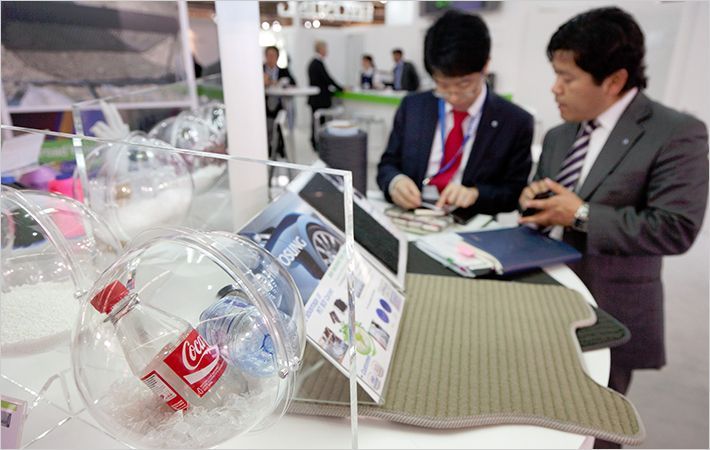Oliver Holleck confirmed this: "It was relatively easy to handle the textile during finishing and the fabric ran through well." When winding up the finished raw fabric, the beam build was straight, the surface was flat without any creases or imprints, and the tension was uniform. Stripiness must be avoided, and the textile layers on the beam should not be able to slide against each other. If relative movement does occur within the beam, the stitches can becoome distorted, for example, and cause moiré effects to be produced. These can also occur if the storage time between warp knitting and finishing is too long.
The operatives must also adjust the machine parameters carefully to ensure that the E 50 gauge fabric runs through the finishing process optimally. When handling the delicate fabric, the finishing operatives must also ensure that the surface is not damaged by pressure points, snagged threads, etc.Last year, KARL MAYER equipped its HKS 2-3 E machine to operate at a gauge of E 50 and by doing this created the perfect tool for producing the finest stretch warp knits in the world. E 50 gauge #
In addition to conventional finishing, the optical and functional characteristics of the E 50 gauge fabric can also be improved by carrying out various other steps. In view of the positive experiences that have already been gained with finishing this fine fabric, Volker Drexel sees that printing, coating and laminating are likely possibilities. In this case, the machines must be adjusted to handle the specific extensibility of the fabric. A finish containing a hydrophilic softener, which improves the moisture management characteristics of these soft fabrics worn next to the skin, also offers advantages when they are used for intimate apparel.
Elastic & Weskott Textilveredlung GmbH was set up in 2005 as a joint venture between Ferdinand Weskott GmbH and Elastic Textile Europe GmbH. The company's special area of expertise is the finishing of stretch knitted fabrics, which was a field in which Ferdinand Weskott had had about a hundred years of experience with.
"We handle the elastic fabrics very carefully," explains the plant manager, Volker Drexel. "Since no two batches are the same, our experienced workers keep their eyes on the fabric at all times and adjust the machine and process parameters accordingly. We never work by the book." All the workers work together to meet the exclusive requirements of the customer. Elastic & Weskott Textilveredlung currently has 54 employees.
"Dermatologically and ecologically safe chemicals and auxiliaries are used when treating all the different fabrics. Effluent loads have been reduced by two-thirds over the last five years by selecting the substrates carefully. We are also responsible for our environment, which is why we operate in an ecologically sound way," explains the managing director, Klaus Weskott, whose factory is located in the centre of the town.
KARL MAYER


